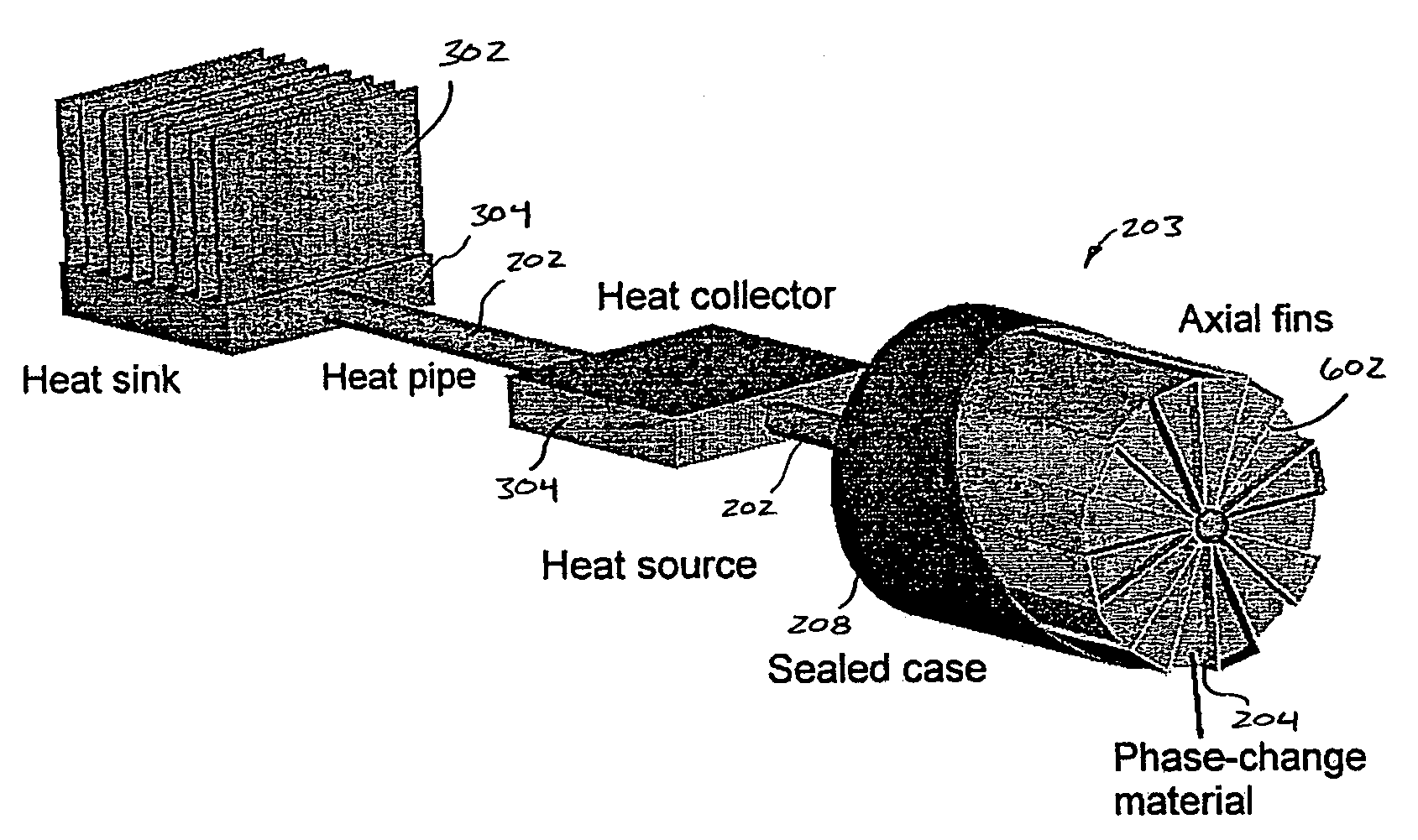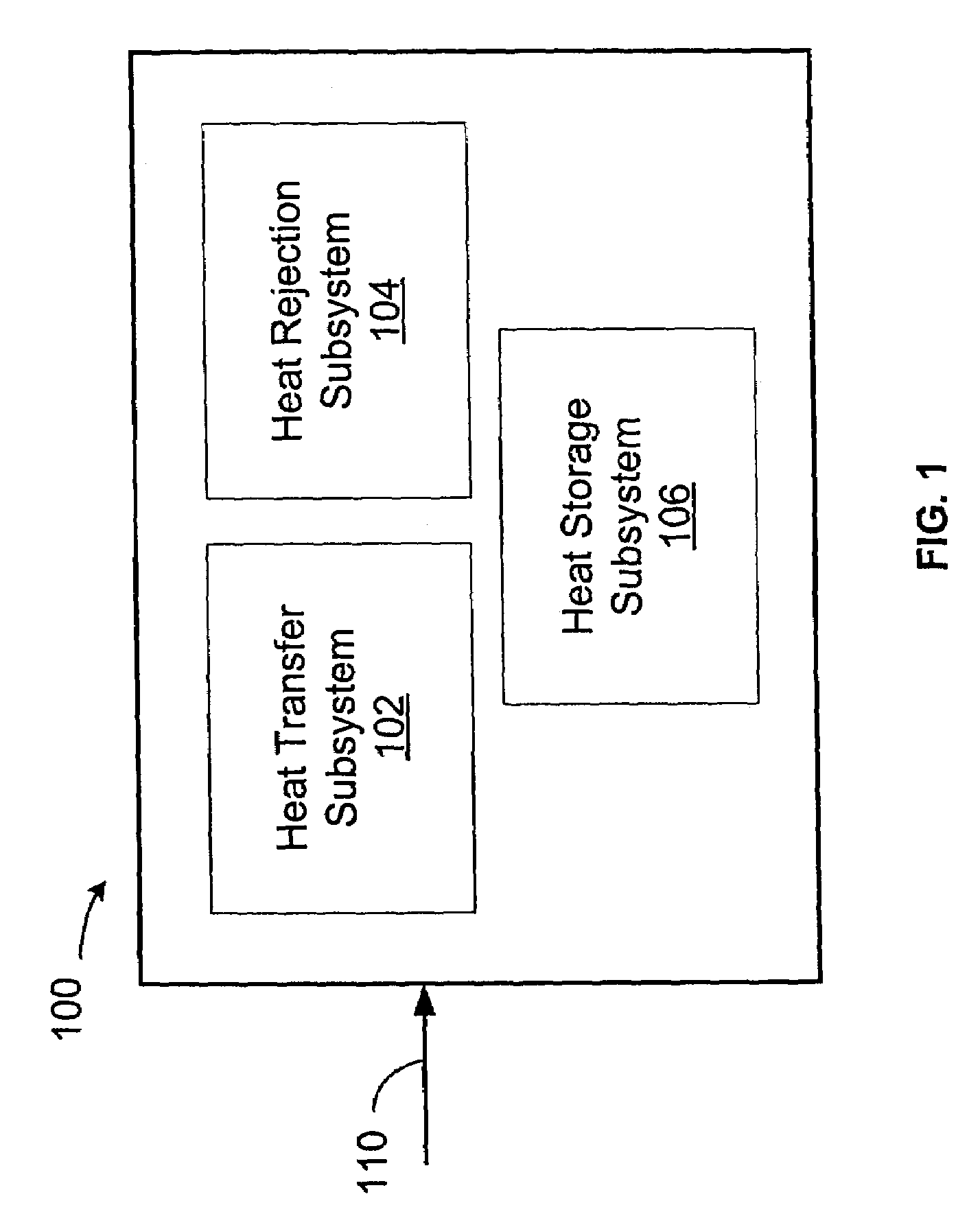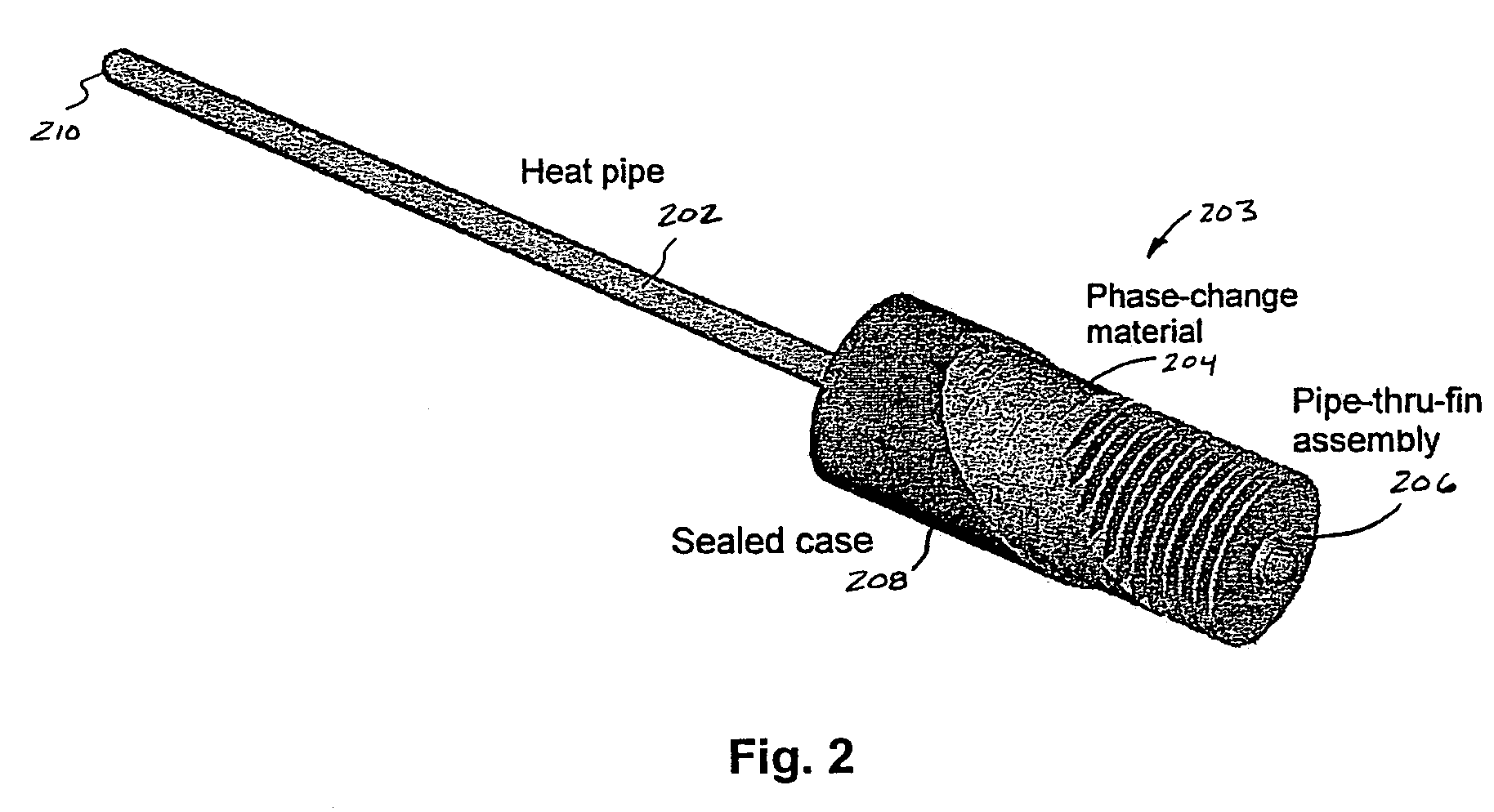Phase-change heat reservoir device for transient thermal management
a heat reservoir and phase change technology, applied in the direction of indirect heat exchangers, semiconductor/solid-state device details, lighting and heating apparatus, etc., can solve the problems of heat transfer challenges, speed and density, and significant challenges, and achieve the effect of being easily integrated into a variety of systems
- Summary
- Abstract
- Description
- Claims
- Application Information
AI Technical Summary
Benefits of technology
Problems solved by technology
Method used
Image
Examples
Embodiment Construction
[0023]Systems and methods in accordance with the present invention overcome the prior art by providing a heat transfer system capable of managing thermal transients through the use of a phase change heat reservoir device.
[0024]Overview
[0025]Referring now to FIG. 1, a system 100 in accordance with the present invention generally includes a heat transfer subsystem 102, a heat rejection subsystem 104, and a heat storage subsystem 106, wherein system 100 accepts a heat input 110 subject to transient conditions. Heat storage subsystem 106 is configured to absorb excess thermal load generated during these transient conditions, and heat rejection subsystem 104 is configured to transfer the heat away from system 100 (i.e., to the ambient environment). Heat transfer subsystem 102 then provides the thermal path between the various subsystems 106 and 104 and heat input 110. As will be discussed in detail below, these three subsystems may comprise a variety of components, and may be arranged in...
PUM
 Login to View More
Login to View More Abstract
Description
Claims
Application Information
 Login to View More
Login to View More - R&D
- Intellectual Property
- Life Sciences
- Materials
- Tech Scout
- Unparalleled Data Quality
- Higher Quality Content
- 60% Fewer Hallucinations
Browse by: Latest US Patents, China's latest patents, Technical Efficacy Thesaurus, Application Domain, Technology Topic, Popular Technical Reports.
© 2025 PatSnap. All rights reserved.Legal|Privacy policy|Modern Slavery Act Transparency Statement|Sitemap|About US| Contact US: help@patsnap.com



